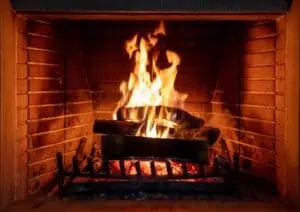How to Light Pilot on Gas Fireplace?
If you’re having trouble lighting the pilot on your gas fireplace, there are a few things you should know first. You’ll want to check for a malfunctioning spark ignitor or thermocouple. You can find these devices near the floor or behind the fireplace. Also, make sure to remove the fixed glass assembly if your fireplace has one. This will prevent the buildup of gas.
(For fireplace maintenance, contact us today!)

Re-lighting the pilot light
If you’ve turned off your gas fireplace and it still hasn’t turned on, re-lighting the pilot light is relatively easy. To do this, turn the gas control knob to the “Pilot” position and hold it there for twenty to thirty seconds. This warms up the thermocouple, which is the safety device. After the time has passed, release the control knob, and you should see the pilot light come on.
If you’re unable to get the pilot to light, first try removing the glass from the fireplace. The owner’s manual will tell you how to do this. If the glass has clips holding it on, unlatch them.
Igniting the spark ignitor
If you notice that your gas fireplace has a spark ignitor, you may have broken it. If this is the case, you need to fix it before you light a fire. You should read your fireplace’s owner’s manual to learn more about the steps to take to repair the spark ignitor. After removing the faceplate, you should follow the repair instructions provided. The steps will vary depending on the model of your fireplace.
To check if the spark ignitor is faulty, you can use a lighter to test it. If it does not make a popping sound, then the spark ignitor is defective. The spark ignitor sends information to the gas valve via a thermocouple.
Leaving the pilot light on all summer
It is important to turn off your gas fireplace pilot light in the summer months. Not only does it conserve energy and money, but it will also prevent bugs from setting up shop inside the unit. Insects can clog the pilot light’s tubes and compromise the entire system. Additionally, running the pilot light prevents moisture from collecting in the pipes, which can lead to corrosion. Leaving the pilot light on throughout the summer can extend the life of your system, but you should weigh the cost of keeping it lit against the benefits it brings.
If you do not use your gas fireplace all summer, it may be a good idea to turn off the pilot light. You can save money on fuel by reducing your usage, but you may also run the risk of overheating the room. If you have a standing pilot light, you may have to re-light it manually to get it working again.
Checking for a malfunctioning spark ignitor or thermocouple
If you’re experiencing problems lighting the pilot light on your gas fireplace, it’s possible that the spark ignitor or thermocouple is malfunctioning. You can check for this problem by holding down the pilot button for about 1 or 2 minutes. If you hear a popping noise, the spark ignitor is faulty, and you should replace it.
A malfunctioning thermocouple or spark ignitor may not send the proper signals to the gas valve, and this may prevent the flame from starting. To test the thermocouple, you need an ohmmeter, a multimeter with a DC setting, and the thermocouple probe. If you see a reading below 25 millivolts, the thermocouple is probably faulty.
Turning off the gas supply
If you have a gas fireplace, you should always turn off the gas supply before lighting the pilot. This will allow any residual gas and any new flame to dissipate. You should also open the windows in order to increase ventilation. If this doesn’t work, call a professional to check the unit for any issues.
Modern gas fireplaces have specialized control panels that manage the standing pilot light. These are often hidden behind the front screen of the fireplace. To access this panel, remove the front screen. You should then locate the gas valve knob, which will be marked with the words “Pilot,” “On,” and “Off.” Once you’ve located this knob, turn it to OFF. Wait at least five minutes so that the gas fumes will dissipate.

